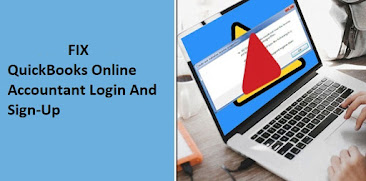Create A Billing Statement In QuickBooks
Creating Statement Charges in QuickBooks
Based on what type of business you have got, you probably have a preferred way of billing customers. If they head into your shop and present a credit card or cash, you create sales receipts. If they order off your site, they may receive an electric receipt. Or your arrangement may be so that you send out invoices.
There’s another way that is especially useful in case your customers have the effect of paying recurring charges, like a continuing service contract that’s billed monthly. It is possible to enter those financial obligations directly as statement charges.
As you know Create A Billing Statement In QuickBooks activity. These are generated automatically through the invoices, receipts, payments, as well as other transactions you’ve recorded over a given time period. But did you know you are able to manually add charges to statements? Here’s how it works.
Creating a Statement Charge
QuickBooks Desktop Statement Charges
Click the Statement Charges icon in the home page or open the clients menu and choose Enter Statement Charges. Your Accounts Receivable register appears. Open the list in the field next to Customer:Job by simply clicking the down arrow and choose the right Customer:Job.
Important Note: In the event that item would be attached to a specific job, not just a customer, be sure you pick the correct job. QuickBooks maintains an independent sign up for each.
Replace the date if necessary and open the Item list (or click <Add New> if you haven’t created an item record yet). Choose the one you need and enter a quantity (Qty). QuickBooks should fill in the rate and description. The sort column will automatically contain STMTCH (statement charge). Click Record when you’re done. Next time you create a statement for that Customer:Job, you’ll begin to see the transaction you merely entered.
Related Post: https://willjamess.weebly.com/blog/create-a-billing-statement-in-quickbooks
Consider creating a statement charge in the place of an invoice for recurring transactions that won't be billed immediately.
Consider creating a statement charge as opposed to an invoice for recurring transactions that'll not be billed immediately.
Statement Charge Limitations
Before you decide to use statement charges, keep in mind that:
You can’t include some information that could show up on an invoice, like sales tax and discounts.
Whether or not your charge relates to hours you worked for the client, QuickBooks will not open a reminder window containing that information the very next time you create an invoice when it comes to customer. You’d have to Enter Time by creating an individual activity or entering the hours on a timesheet.
You still have to bill the customers.
Billing the Customer
There are 2 ways to bill customers for statement charges. You can easily, needless to say, just generate statements such as the date(s) regarding the charge(s). The next time you create a statement for customers that have manually-entered statement charges, it's going to contain them, along side virtually any activity like invoices and payments. We’ve covered statements before, but we’d be pleased to go over this QuickBooks feature to you. This means you’ll need certainly to enter a statement charge on a monthly basis if it’s to be a recurring one. Instead, you can treat them as memorized transactions, so they’re automatically entered when you look at the register. If you’re billing multiple customers for similar service on a monthly basis, for instance, this could work very well.
Related Post: https://kevindelton858.wixsite.com/website/post/create-a-billing-statement-in-quickbooks
First, you’ll need certainly to create a Group which has all those customers. Open the Lists menu and choose Memorized Transaction List. Right-click anywhere on that screen and click on New Group. This box will open.
If you regularly bill customers for the same service, like a monthly subscription, you are able to create a Group and memorize the transactions.
In the event that you regularly bill customers for the same service, like a monthly subscription, you can create a Group and memorize the transactions.
Give your Group a Name and then click the button in front of Automate Transaction Entry. Open the list into the field next to How Often and choose the billing interval. Select the Next Date to indicate if this group billing must start. In the event that charges must certanly be entered on a finite basis, enter the Number Remaining. And be sure to fill in the Days In Advance To Enter if that’s applicable. Click OK.
Next, you’ll assign the customers who must be billed monthly to your Group. Click Statement Charges on the home page again to open up your A/R register. Select each customer one at a time and right-click on the statement charge you want to recur monthly, then select Memorize Stmt Charge. Within the window that opens, give the transaction a fresh Name if you’d like (this will not affect the transaction, only how it is listed). Click on the button right in front of Add to Group and choose the Group name from the drop-down list. Repeat for every customer you wish to include.
Keeping Track
If periodic statements are most of your customer billing method, this system should work fine. However if in addition, you send invoices and/or collect payment at the time of the sale, you’ll need to keep in mind that your statement charges must certanly be billed on a normal basis, too. We could look at your customer billing procedures to you to determine whether you’re using QuickBooks’ tools wisely – or whether some changes could improve your collection of payments.




Comments
Post a Comment